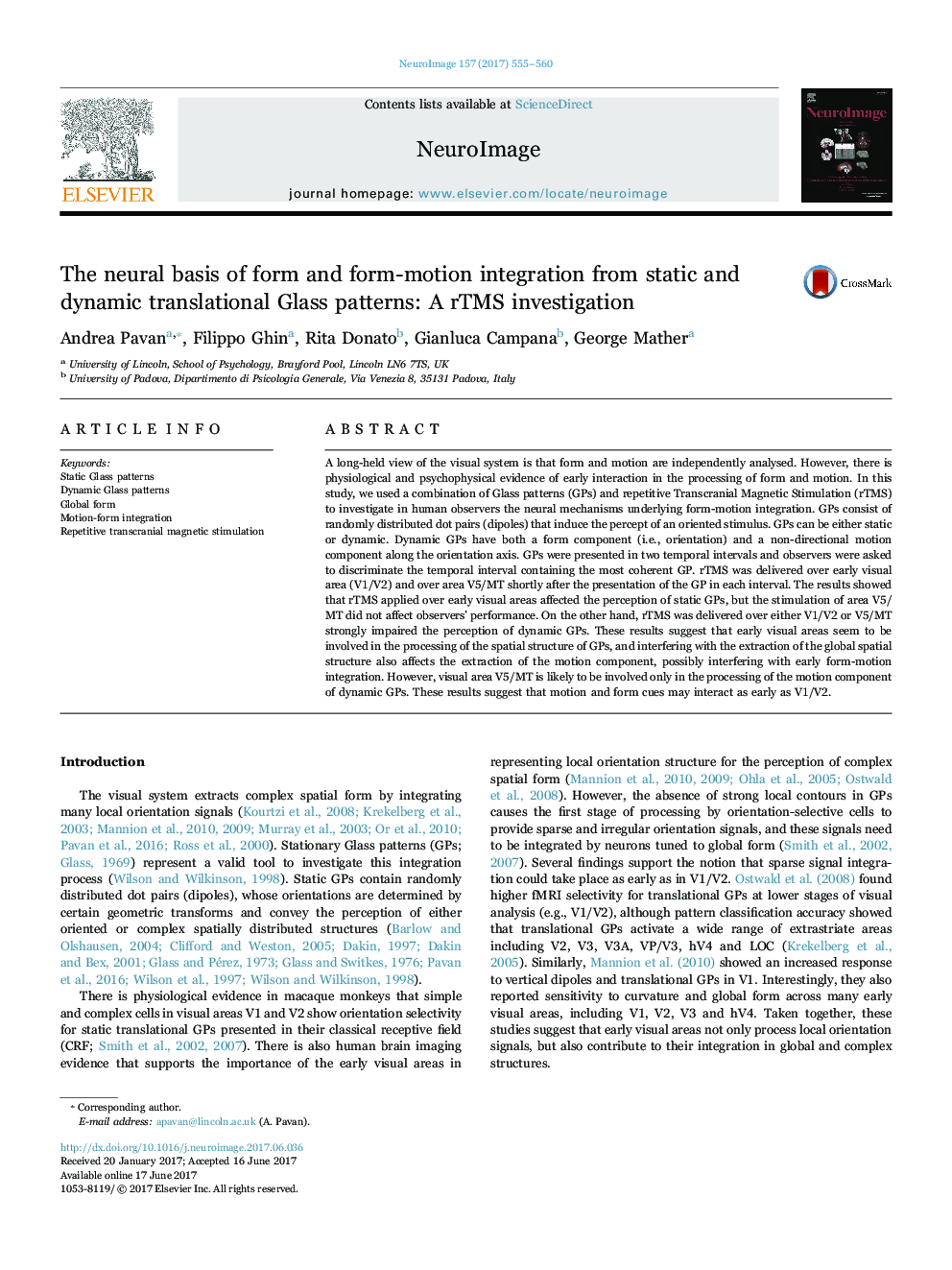| کد مقاله | کد نشریه | سال انتشار | مقاله انگلیسی | نسخه تمام متن |
|---|---|---|---|---|
| 5630939 | 1580853 | 2017 | 6 صفحه PDF | دانلود رایگان |

- Assessed impact of rTMS over V1/V2 and V5/MT on perception of Glass patterns (GPs).
- rTMS over V1/V2 interfered with perception of both static and dynamic GPs.
- rTMS over V5/MT interfered only with perception of dynamic GPs.
- Early visual areas encode the global spatial structure of all GPs.
- Area V5/MT is important for signalling the dynamic properties of GPs.
A long-held view of the visual system is that form and motion are independently analysed. However, there is physiological and psychophysical evidence of early interaction in the processing of form and motion. In this study, we used a combination of Glass patterns (GPs) and repetitive Transcranial Magnetic Stimulation (rTMS) to investigate in human observers the neural mechanisms underlying form-motion integration. GPs consist of randomly distributed dot pairs (dipoles) that induce the percept of an oriented stimulus. GPs can be either static or dynamic. Dynamic GPs have both a form component (i.e., orientation) and a non-directional motion component along the orientation axis. GPs were presented in two temporal intervals and observers were asked to discriminate the temporal interval containing the most coherent GP. rTMS was delivered over early visual area (V1/V2) and over area V5/MT shortly after the presentation of the GP in each interval. The results showed that rTMS applied over early visual areas affected the perception of static GPs, but the stimulation of area V5/MT did not affect observers' performance. On the other hand, rTMS was delivered over either V1/V2 or V5/MT strongly impaired the perception of dynamic GPs. These results suggest that early visual areas seem to be involved in the processing of the spatial structure of GPs, and interfering with the extraction of the global spatial structure also affects the extraction of the motion component, possibly interfering with early form-motion integration. However, visual area V5/MT is likely to be involved only in the processing of the motion component of dynamic GPs. These results suggest that motion and form cues may interact as early as V1/V2.
262
Journal: NeuroImage - Volume 157, 15 August 2017, Pages 555-560